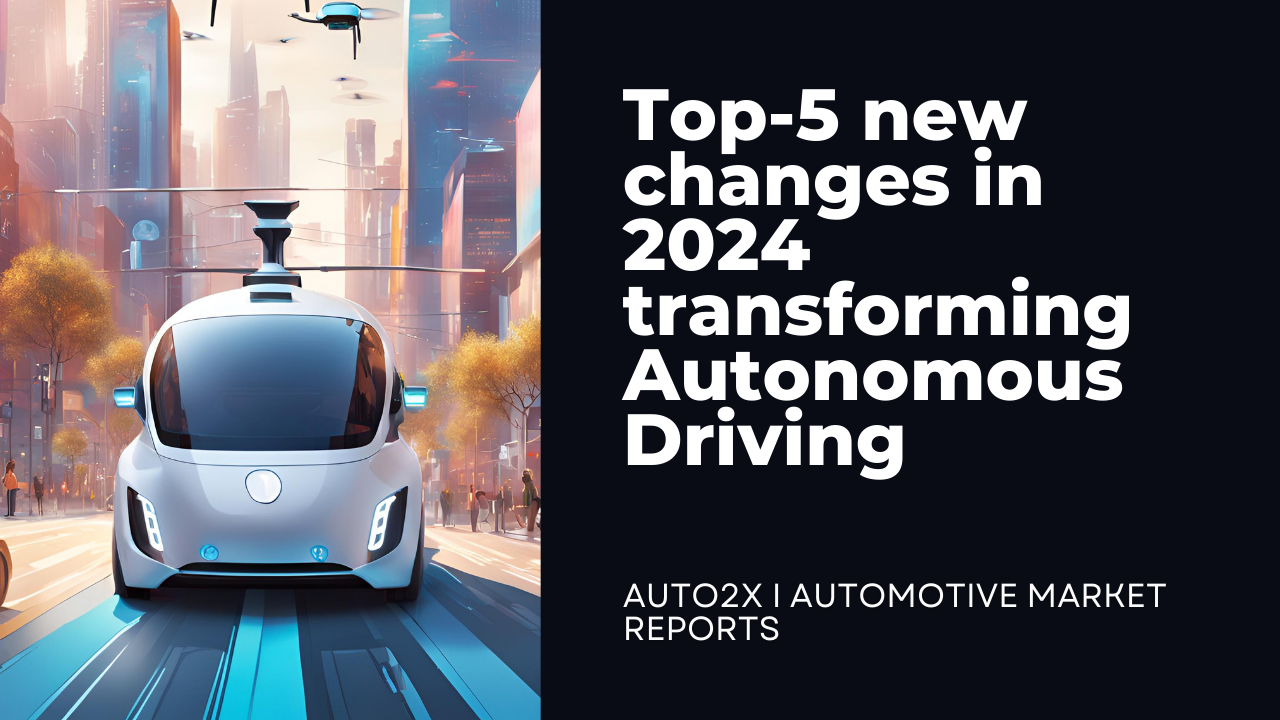The landscape of autonomous driving continues to evolve rapidly, driven by advancements in technology, regulation, and market dynamics. In 2024, several key changes are reshaping the industry, bringing us closer to fully autonomous vehicles. Here are the top five transformations to watch in autonomous driving this year:
1. Regulatory Milestones for Level 3 Autonomous Driving
2024 marks a pivotal year for autonomous driving as governments and regulatory bodies move forward with new frameworks for Level 3 autonomy. While Level 2 systems like adaptive cruise control and lane-keeping assist have become commonplace, the shift to Level 3—where the vehicle can take full control in certain conditions but still requires human intervention—represents a significant step.
In Europe, Japan, and China, new regulations are being enacted to allow the deployment of Level 3 autonomous systems. This includes updates to the UN Regulation No.791, which covers Automated Lane Keeping Systems (ALKS). These regulatory changes will enable manufacturers like Mercedes-Benz and Audi to activate Level 3 features, like the DRIVE PILOT and Traffic Jam Pilot, which rely on highly automated driving capabilities. The move toward Level 3 autonomy is set to accelerate in these regions, with Germany and Japan expected to lead the charge in the next phase of deployment.
To better understand the changing legislation read our report: Regulatory roadmaps to Autonomous Driving, Automotive Cyber Security, V2X & AI
2. Cybersecurity Becomes Mandatory for Autonomous Systems
As vehicles become more connected and automated, cybersecurity is a growing concern. The introduction of new UN regulations 2in 2024, including those governing cybersecurity management and software updates, is a critical step in ensuring the safety and integrity of autonomous driving systems. The “UN Regulation on Cybersecurity and Cybersecurity Management Systems” and “UN Regulation on Software Updates & Software Management Systems” will require car manufacturers to implement robust cybersecurity measures to protect against potential vulnerabilities in the vehicle’s connected systems.
These regulations also call for real-time software updates and the integration of security protocols to mitigate risks associated with vehicle-to-everything (V2X) communication and other emerging technologies in autonomous driving. With an increasing reliance on data and cloud-based systems, the implementation of stringent cybersecurity measures will be essential to maintain the safety of both vehicles and passengers.
3. Advancements in Autonomous Driving Insurance Models
As the adoption of Level 3 and Level 4 autonomous driving grows, traditional car insurance models face significant disruption. In 2024, insurance companies are beginning to adjust to the new realities of vehicle autonomy, particularly with regards to liability. For instance, when a Level 3 vehicle operates in an automated mode, liability may shift from the driver to the car manufacturer, creating a need for new insurance frameworks.
The regulatory introduction of black-box technology and driver availability recognition systems will help determine responsibility in the event of an accident. This shift in liability will require insurers to adapt, offering tailored policies for autonomous vehicles while ensuring proper risk management for manufacturers. This disruption in the insurance sector will continue to evolve as higher levels of autonomy are introduced.
4. ADAS and Autonomous Technology Suppliers Poised for Growth
The rise of autonomous driving has spurred tremendous growth in the ADAS (Advanced Driver Assistance Systems) and sensor technology markets. As carmakers push forward with autonomous features, suppliers of critical technologies like LiDAR, radar, and cameras are seeing increased demand. In 2024, leading suppliers such as Bosch and Continental are expanding their investments in AI, software, and sensor technologies to meet the growing needs of autonomous vehicle manufacturers.
The competition in the ADAS space is intensifying, with tech giants and new entrants joining established automotive suppliers. This heightened competition is driving innovation and creating new opportunities for partnerships. While traditional ADAS suppliers are well-positioned to capitalize on the growth of autonomous systems, they must continue to innovate to stay ahead in a rapidly evolving market.
To learn more about winning business models in ADAS & Autonomous Driving and market leadership in ADAS read our report Rankings & market shares of Top Tier-1 ADAS Suppliers by 2020.
5. Human-Machine Interface (HMI) Innovation for Safer Autonomy
The development of intuitive Human-Machine Interfaces (HMI3) is critical to ensuring the safe integration of autonomous driving technology. In 2024, automakers are focusing on enhancing HMI systems to improve communication between the vehicle and the driver. These advancements are essential for seamless transitions between autonomous and manual driving modes, especially in Level 3 systems.
New technologies such as driver-facing cameras, which monitor eye movement and driver attention, are becoming standard features in autonomous vehicles. These cameras help ensure that drivers are ready to take control when necessary. Additionally, AI-based emotion state monitoring systems are being integrated to improve the effectiveness of driver monitoring systems and enhance safety. As autonomy levels increase, these HMI systems will be essential for preventing misuse and ensuring that drivers remain engaged and aware.
Conclusion
The autonomous driving industry is undergoing significant changes in 2024, driven by regulatory advancements, technological innovations, and shifting market dynamics. With the regulatory green light for Level 3 systems, the rise of cybersecurity mandates, the disruption of auto insurance, the growth of ADAS suppliers, and advancements in HMI technology, the future of autonomous driving is rapidly taking shape. These transformations will not only make vehicles safer and more efficient but also pave the way for a new era of mobility where full autonomy becomes a reality.

